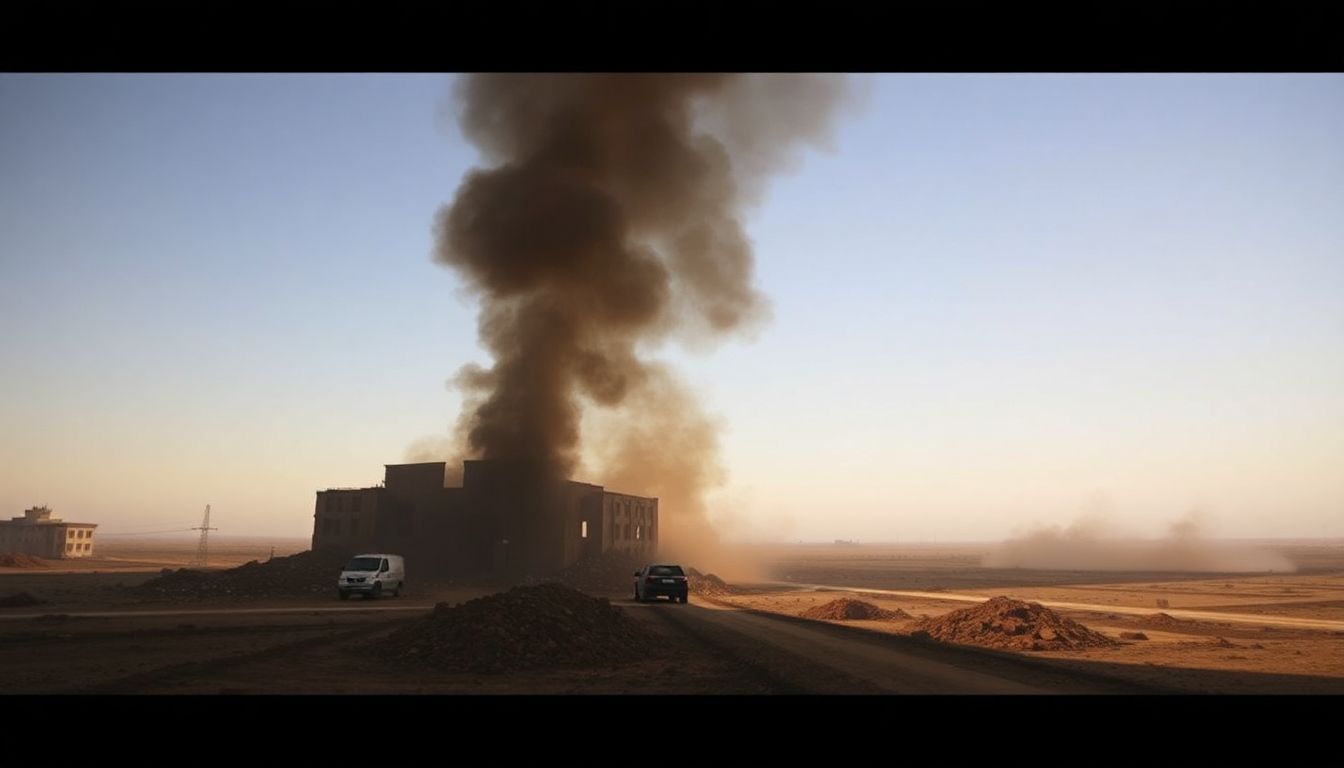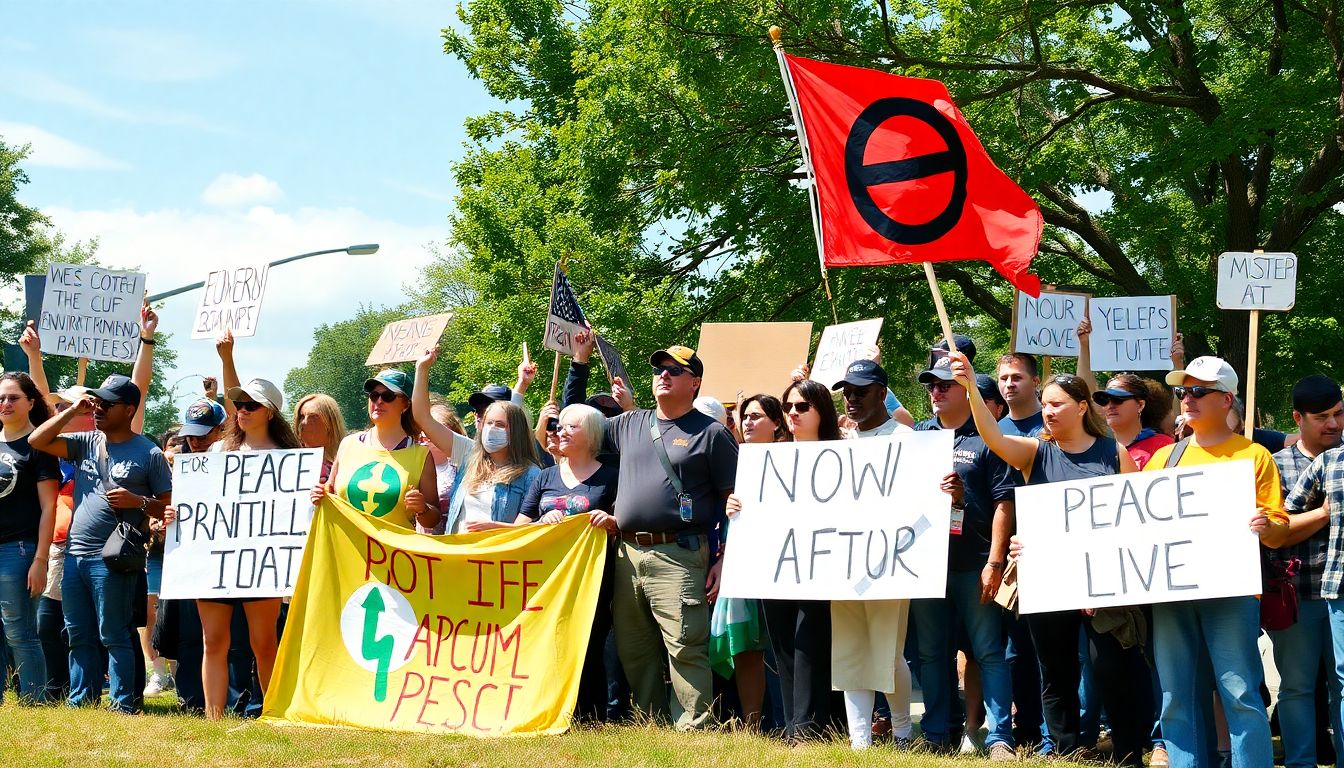Welcome to this thought-provoking exploration of a critical issue that often goes unnoticed. We’ll delve into the environmental impacts of militarism, particularly focusing on the recent airstrikes in Syria. Prepare to uncover the silent ecological devastation caused by war and the urgent need for environmental justice groups to address this elephant in the room.
Unveiling the Ecological Devastation of Militarism in Syria
Imagine a once-thriving landscape now reduced to a desolate wasteland, the eerie silence only interrupted by the distant echoes of explosions. This is the stark reality of Syria’s countryside, ravaged by years of airstrikes. The environmental devastation is overwhelming—scorched earth, twisted trees, and polluted rivers paint a grim picture of ecological catastrophe.
The impact of these airstrikes goes beyond the immediate destruction. Chemical pollutants from munitions seep into the soil, contaminating groundwater and posing long-term health risks to both humans and wildlife. Meanwhile, the collapse of infrastructure has led to unchecked waste disposal, further exacerbating the environmental crisis.
Yet, amidst this ecological turmoil, there is a deafening silence from major environmental organizations. While humanitarian groups work tirelessly to address the immediate needs of affected communities, the lack of focus on the environmental impact raises serious questions. How can we address the full scope of this tragedy if the ecological consequences are left unseen and unheard?

The Earthquake That Wasn’t
The December 15th Airstrike in Syria: A Shockwave Mistaken for an Earthquake
In the early hours of December 15th, a powerful airstrike rattled Syria, sending shockwaves that were felt across the region. The intensity of the blast was so severe that it was initially mistaken for an earthquake, with seismic monitoring systems picking up the explosions as if they were tectonic activity. The airstrike, reportedly carried out by Israeli forces, targeted key military sites in the country, leaving a trail of destruction and confusion in its wake. The impact was profound, not just in terms of the immediate damage, but also in the fear and uncertainty it sparked among the civilian population.
The Environmental Toll of Military Actions
Beyond the immediate devastation, airstrikes like the one on December 15th carry significant environmental consequences. These military actions can lead to:
- Soil and water contamination from explosive residues and fuel spills.
- Destruction of wildlife habitats and ecosystems.
- Air pollution from the release of toxic chemicals and particulate matter.
- Long-term health impacts on local populations due to exposure to hazardous materials.
The environmental footprint of such actions is often overlooked in the heat of geopolitical tensions, but the long-term effects can be catastrophic for both the environment and public health.
The Silence of Environmental Organizations
Despite the clear environmental implications of military actions, there is often a deafening silence from environmental organizations. This lack of response can be attributed to several factors:
-
Political Sensitivity:
Addressing the environmental impact of military actions can be politically sensitive, potentially alienating supporters or drawing criticism from governments.
-
Focus on Immediate Crises:
Environmental groups may prioritize more immediate and visible crises, such as climate change or deforestation, over the less visible but equally damaging effects of military pollution.
-
Lack of Data:
The secrecy surrounding military operations can make it difficult for environmental organizations to gather the data needed to make a compelling case for action.
However, this silence is a missed opportunity to highlight the interconnectedness of environmental and humanitarian issues.
The Need for Integrated Advocacy
The December 15th airstrike serves as a stark reminder of the need for integrated advocacy that addresses both the humanitarian and environmental impacts of military actions. Environmental organizations must break their silence and work alongside humanitarian groups to raise awareness about the full spectrum of consequences that arise from such events. By doing so, they can help build a more comprehensive understanding of the true costs of conflict and advocate for policies that prioritize both peace and environmental sustainability.

The Environmental Cost of War
The long-term ecological damage caused by militarism is a often overlooked consequence of war, with catastrophic effects lingering long after the battles have ended. The strip of land known as Gaza, one of the most densely populated areas in the world, provides a stark example. Years of conflict have led to the destruction of agricultural land, water resources, and crucial infrastructure. The use of heavy metals and toxic chemicals in munitions has contaminated the soil and water, posing significant health risks to the local population. The 2014 conflict alone generated an estimated 2.5 million tons of rubble, much of which ended up in the Mediterranean Sea, causing irreparable damage to marine ecosystems.
In Syria, the ecological impact of war is equally devastating. The conflict has led to massive deforestation, with trees being cut down for fuel and shelter. The loss of forest cover not only contributes to climate change but also leads to soil erosion and loss of biodiversity. Meanwhile, the targeting of oil facilities has resulted in massive oil spills, further exacerbating the environmental crisis. According to a report by the Syrian Center for Policy Research, the cost of environmental degradation in Syria is estimated to be around $37 billion, a staggering figure that underscores the severe and lasting impact of war on the environment.
War not only destroys ecosystems but also exacerbates the climate crisis. The U.S. military, one of the largest polluters in the world, has a carbon footprint larger than that of many countries. Here’s a breakdown of its impact:
- The U.S. military is the single largest consumer of oil in the world, and the single largest producer of greenhouse gases.
- Its overseas operations are responsible for an estimated 44 million metric tons of CO2 emissions annually.
- The U.S. military’s carbon footprint is larger than that of 140 countries combined.
The Israeli military, while smaller, also contributes to the climate crisis. Its operations in the Occupied Palestinian Territories have led to the destruction of farmland, orchards, and water resources, further exacerbating the ecological crisis in the region. The use of white phosphorus and other toxic munitions has contaminated soil and water, posing significant health risks to the local population. The ongoing blockade of Gaza also hinders environmental recovery and sustainable development, creating a vicious cycle of ecological destruction and human suffering. The role of militarism in the climate crisis underscores the urgent need for demilitarization and sustainable peace.

The Silence of Environmental Organizations
The silence of environmental organizations on certain pressing issues can often be attributed to a mix of strategic, political, and organizational factors. One of the primary reasons could be the fear of backlash from stakeholders, including governments, corporations, and even their own members. Tackling controversial topics might lead to a loss of funding, political support, or even internal cohesion. Additionally, some organizations might be overwhelmed by the magnitude of the issue, feeling that their efforts might be too small to make a significant impact.
Another potential factor is the lack of clear solutions. Environmental issues are often complex and interconnected, making it difficult to propose definitive actions. Organizations might be hesitant to speak out when they cannot offer clear-cut answers or feasible strategies. Furthermore, the need for scientific consensus can also contribute to this silence. Environmental groups often rely on scientific data to support their positions, and without a strong consensus, they might feel uncertain about advocating for a particular stance.
The implications of this silence are far-reaching and profound. When environmental organizations fail to address critical issues, they leave a void that can be filled by less informed or misleading voices. This can lead to:
- Misinformation spreading among the public
- Delayed policy responses from governments
- Continued degradation of the environment
Moreover, the silence can also have implications for the organizations themselves. It can erode public trust, as people may begin to question the organization’s commitment and courage. It can also demoralize staff and volunteers who joined the cause to make a real difference. Ultimately, the silence of environmental organizations on critical issues can hinder progress towards environmental sustainability and harm their own reputations.

The Urgent Need for Action
The environmental movement and the anti-war movement, while seemingly disparate, are intrinsically linked in ways that demand collective action. Wars and military conflicts leave behind more than just political and social devastation; they also inflict severe environmental damage. From the use of hazardous materials to the destruction of natural habitats, the environmental cost of war is staggering. For instance, the burning of oil wells during the Gulf War released immense amounts of carbon emissions, contributing to global warming. Similarly, the use of depleted uranium in ammunition has led to long-term environmental contamination. By joining forces, the environmental movement can highlight these often overlooked consequences of war, emphasizing the urgent need for peace to preserve our planet.
Public stance on the issue varies, but there is a growing awareness of the interconnectedness of environmental and anti-war sentiments. According to a recent poll, a significant portion of the public believes that environmental degradation should be considered a key factor in opposing military interventions. This shift in public opinion is driven by a deeper understanding of the ecological footprint of wars. People are beginning to realize that the fight for a sustainable future cannot be separated from the fight for peace. This public sentiment provides a fertile ground for environmental organizations to step up and lead the charge.
Environmental organizations play a crucial role in raising awareness and pushing for change. They have the expertise and resources to educate the public about the environmental impacts of war. Through campaigns, research, and advocacy, these organizations can:
- Highlight the use of harmful materials and their long-term effects on the environment.
- Promote policies that prioritize sustainable practices in conflict zones.
- Encourage international cooperation to address the environmental damage caused by wars.
Moreover, environmental organizations can bridge the gap between the environmental and anti-war movements by fostering collaboration. By working together, these movements can create a more powerful and unified front against the destructive forces of war. Environmental organizations can host joint events, co-author policy papers, and engage in collective lobbying efforts to push for legislation that addresses both environmental and anti-war concerns. This synergy not only amplifies their message but also ensures that the voice of the people is heard loud and clear, driving meaningful change.
FAQ
Why is militarism an environmental issue?
What are the environmental impacts of airstrikes?
- Contamination of soil and water
- Destruction of ecosystems and biodiversity
- Release of harmful emissions
- Long-term ecological damage that affects agriculture and water quality
Why are environmental organizations silent on this issue?
- Ignorance or normalization of a whitewashed environmentalism
- Fear of repression or financial repercussions
- Lack of recognition of the connection between militarism and environmental devastation
How can the environmental movement support the anti-war movement?
- Raising awareness of the ecological devastation caused by war
- Advocating for policies that reduce militarism and promote peace
- Joining anti-war protests and campaigns
- Pushing for the U.S. to take its hands off Syria and prevent war with Iran
What can individuals do to address this issue?
- Educating themselves and others about the environmental impacts of militarism
- Supporting organizations that advocate for both environmental justice and peace
- Participating in protests and campaigns against war and militarism
- Advocating for policies that promote peace and environmental sustainability









